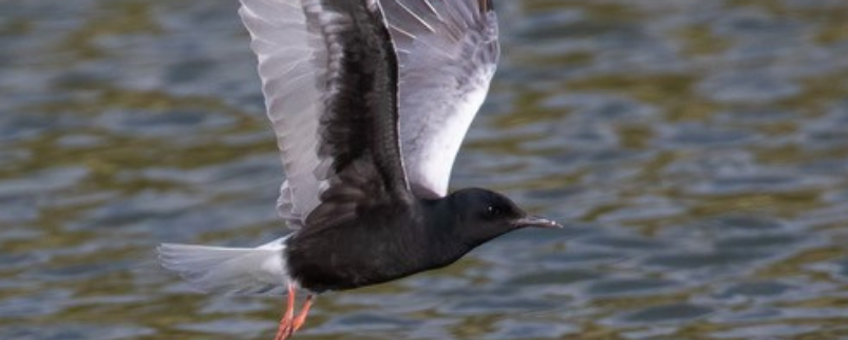
Two new bird species recorded on Bonaire in 2020
Dutch Caribbean Nature Alliance (DCNA)Annual updates to the local bird records have been published in the Dutch Caribbean Nature Alliance’s (DCNA) free newsletter BioNews 11 (2017) (pdf: 3,0 MB), 19 (2018) (pdf: 2,7 MB) and 31 (2020) (pdf: 697 KB). Between 2016 and 2019, Peter-Paul Schets has provided annual updates to the bird species lists on Bonaire, which included a brief overview of each new species. In 2020, two new birds were added to this list: the common swift and the white-winged tern.
Common swift

In May of 2020, local birders Spike Stapert and Steve Schnoll spotted and photographed a unique swift. With the help of several experts, including Peter-Paul Schets (reviewer for eBird-Bonaire) this individual was identified as a Common swift (Apus apus), common and widespread in Europe, but rare at the other side of the Atlantic Ocean. There has only ever been one other confirmed sighting in the area, a record from Suriname dating back to 2012. So the observation in 2020 was not only a new species for Bonaire, but for ABC islands and for the Caribbean as well!
Common swifts breed throughout almost all Europe and Asia. They are well-known summer visitors to cities in western Europe, where they arrive from their wintering grounds by the end of April and leave by mid-summer. They are known to spend the winters in Africa, south of the equator. Common swifts are strong flyers and spend most of their life in flight.
White-winged tern

Steve Schnoll was birding at Bonaire Sewage Works (LVV, pdf: 507 KB) on the early morning of June 12th 2020 when he noticed an unfamiliar small tern that was hovering over the main pond. This tern was mainly black with a black bill, red legs, mostly white wings and a white tail. Thanks to some well shot photographs, this bird was later identified as a white-winged tern (Chlidonias leucopterus) in breeding plumage, a first sighting for Bonaire as well for ABC islands. It stayed for a week at the same location, enabling a few other lucky birders to observe this graceful and delicate bird.
White-winged terns are known to breed between central Europe and eastern Asia. Every spring they are seen in small numbers in The Netherlands. This species winters mainly in Africa and southeast Asia, Australia and even as far as New Zealand. Like common swifts, this tern is a recognized vagrant to North America.
The white-winged tern represents species number 237 for Bonaire. Interestingly, of the fifteen new species found on Bonaire since 2016, seven were found at LVV ponds, three of which were new for ABC islands. Thanks to these freshwater ponds, this area seems to be a magnet for rare birds.
Report your sightings
Have you observed birds? Report your nature sightings and photos on the website DutchCaribbean.Observation.org or download the free apps (iPhone (iObs) & Android (ObsMapp)).
Species reports by local communities and tourists are invaluable for nature conservation efforts to help increasing public awareness and overall species protection. Besides, DCNA, Observation International and Naturalis Biodiversity Center are working together to develop an automated species identification app for phones. Your uploaded photos are of great value to make this possible. For questions, please contact research@DCNAnature.org
DCNA would like to thank Peter-Paul Schets for writing this article and Steve Schnoll for sharing his records and for providing pictures of both species.
Text: Peter-Paul Schets
Photos: Steve Schnoll
